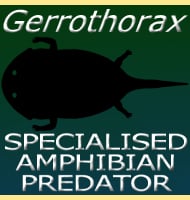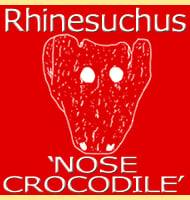Gerrothorax
In Depth The body of Gerrothorax is flattened to the extreme and is one of the morphological features that indicate Gerrothorax lived at the bottom of aquatic habitats such as lakes and rivers. The eyes of Gerrothorax are placed on top of the head in an orientation that really would only provide upwards vision. Rather … Read more

